Stormy Monday Goods
Repurposed skateboards and recycled cutting boards handmade in Southern California
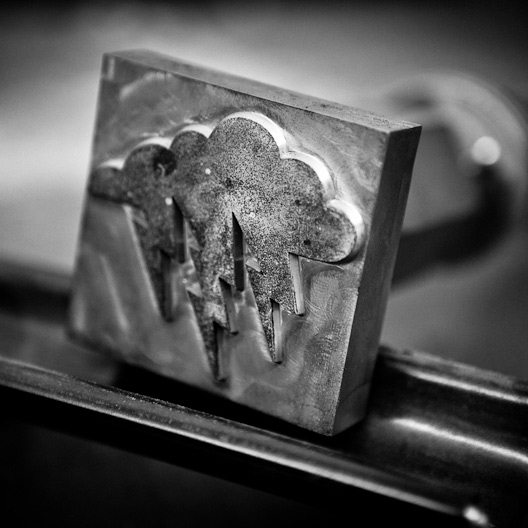
by Liz Cebron

On a recent visit to the made in America brand collaborative Shelter Half, we discovered Stormy Monday Goods—thoughtfully repurposed and redesigned skate and cutting boards, branded with a simple thundercloud and given a second shot at life. These one-of-a-kind creations are the labor of love of Neil Harrison, a Southern California native who, after nearly two decades in the industry—first at Quiksilver, then helping friends get a “little brand” called Volcom off the ground—decided to slow down and work with his hands.
Stormy Monday was conceived during a trip to Portland in late 2006—Harrison was in the Pacific Northwest visiting friends, one of whom had reshaped a couple of used skateboards and was drawing on them as an art project. Harrison made one for himself and after that, he was hooked. “I was really into the idea of re-shaping a board—not only because it gave me the opportunity to work with my hands, but also from a conceptual standpoint—I liked the idea that a used board could get back on the road again, so to speak.” Upon returning to Southern California, Harrison started collecting used boards from his friends in the skate world, team managers and team riders, who tended to have stacks of used boards laying around and with the underlying ethos of “Recycle, repurpose, reuse,” Stormy Monday was born.
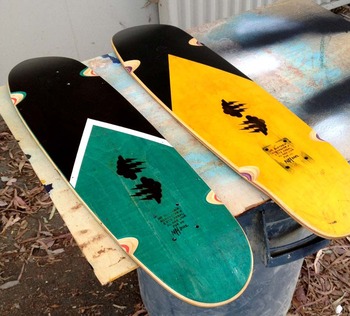
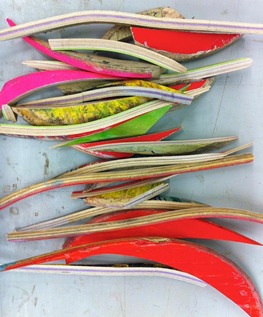
All of your goods (with the exception of the surfboards, which are made in Hawaii) are handcrafted in California. Can you tell us more, specifically, about the process?
First is my least favorite part, stripping off the grip tape. Some tape is friendly and peels off in one to three pieces. Sometimes it breaks into a million bits and pieces. Once the grip is removed, I trace a shape pattern on to the board and cut it out. Then I smooth out the edges and brand the “3 Bolt Storm Cloud” logo on to the boards. Next is staining, painting and completing the rails and wheel wells. The wheel wells are one of the trickiest parts because you’re doing one at a time and you have to match them to each other as close as you can. Sometimes I’ll let boards sit for a little while before I do this part as I try to get myself psyched up to do them—you can ruin the board very easily after all that work. Each board is then number stamped, signed and logged in the book. Every board to date has been logged, including the cutting boards and now our surfboards (dropping this spring).
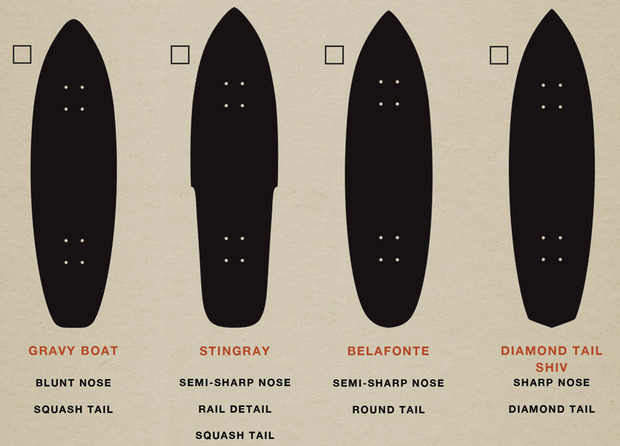
The process of creating cutting boards or cheese boards is very similar to the skateboards. I work out of my friends’ woodshop in Santa Ana and sometimes they have woods that are deemed “undesirable” for cabinets because of knots, sap or mineral streaks. I’ll also find scrap wood that someone leaves out on their yard for pick up. If I can’t find any wood via those two sources I’ll go to the lumber yard and buy their “damaged” wood. It’s perfect because those characteristics or flaws in the wood make our boards interesting looking and unique.
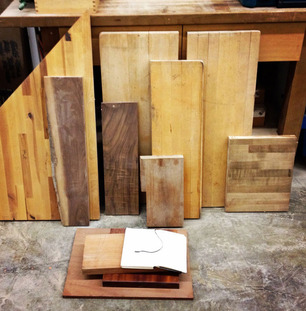
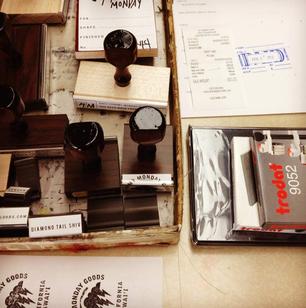
Speaking of the cutting boards, it’s not the first thing that comes to mind alongside skateboard decks and surfboards, but in your case in seems to work. Why cutting boards in the mix?
It certainly wasn’t on purpose to have them in the mix. It was a happy accident if you will, and they have only come to be part of the mix somewhat recently. It was only after I saw some scrap woods that I thought I could make nice cutters for some friends and after making a few, realized how much fun it was working on them. Then I thought it’d be funny to add to the skateboard order form.
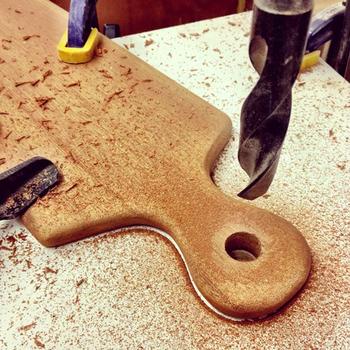
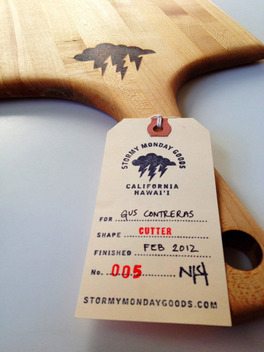
After that, I started getting orders from friends and then eventually stores. There’s the whole thing that’s happening right now where people want to know the story behind the product and/or know the person or persons who are making them and I think that’s what’s great about where we’re going as a country, not as whole, but on this very intimate underground level and it seems to be slowly effecting the grander consuming audience.
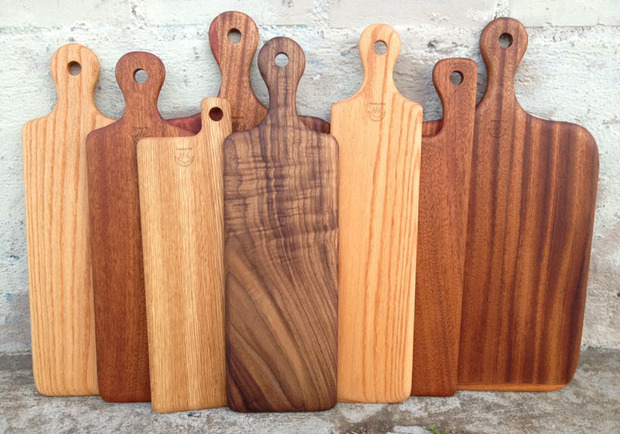
Your logo is really interesting, how did that come to you?
The logo and name were inspired on that same visit to Portland. Jake had a simple cloud painting that he had made. It was a puffy cloud with three bolts of lightning floating beneath it and the word Monday at the bottom. So Monday was the original name, then I added Stormy to make it sound heavier. I started working up stylized versions of Jake’s cloud painting—I wanted it to have a Native American look and vibe to it, like a modern version or a petroglyph. Simple, strong and to the point.
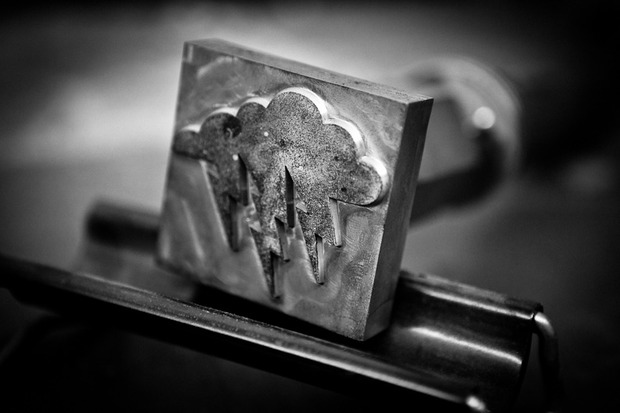
Can you tell us a little more about your background—where you grew up, how you got into all of this (skateboards, surfing, etc)?
I was born in Bellflower and grew up in Buena Park—home of Knott’s Berry Farm. My mom loved to go to the beach and she would take us to the OP Pro, which, at the time, was the big surf contest in Huntington Beach. I was just boogie boarding then but after watching the guys surfing in the contest that was all I wanted to do. I was starting to skate around this time and honestly don’t remember how or who turned me on to it but it just found me. Skating was obviously more obtainable for an inland kook such as myself, so I was a skater first, surfer second. We had this ditch behind a drive-in that was close to my house and we skated that thing every day—it’s all I could think about in class! We were surfing the ditch walls before we learned how to surf real waves.
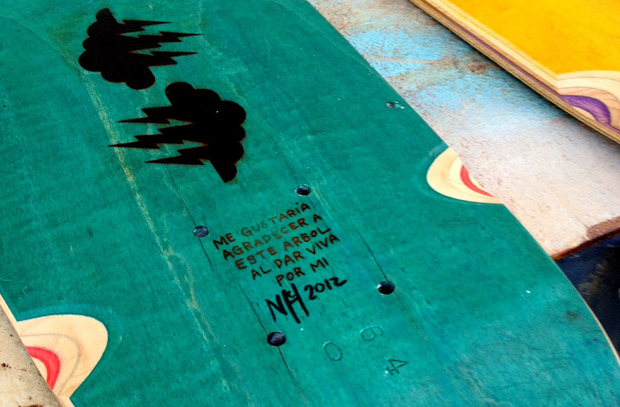
After I graduated high school in 1988, I moved to the beach and my friend got me a job working in the warehouse at Quiksilver. Over the next couple of years, I went from the warehouse to the art department, and then into the design dept. Around ’92 I left Quik and took up with some new friends to get the brand Volcom off the ground. I worked there as design and art director for about 15 years and left in 2006. I laid low for a few years, worked on an avocado grove I owned with some family at the time, and did some freelance design art projects here and there. Then last year my friend Danny called and asked if I’d like to stop fooling around and turn Stormy Monday into a proper brand. And here we are.
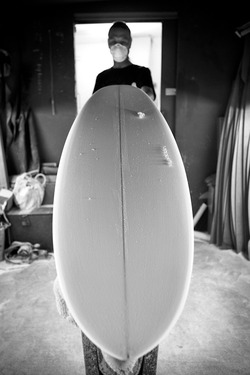

Stormy Monday currently sells skate decks for $125 and completes for $225 through Shelter Half, with denim and Hawaiian made surfboards on the horizon. For direct ordering and more information see Stormy Monday directly.









